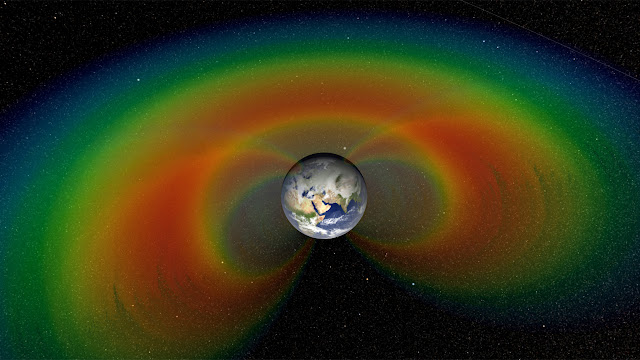ROSCOSMOS - Bion-M1 Mission patch.
Oct. 17, 2019
NASA has selected nine grant proposals for space biology research experiments, the results of which will contribute to the understanding of health risks humans will experience in deep space, including exploration at the Moon through the Artemis program and future missions to Mars. Selected investigators will have an opportunity to conduct rodent experiments to be flown on a biosatellite mission, known as Bion-M2, with the Russian space agency Roscosmos.
In 2022, Roscosmos and the Institute of Biomedical Problems of the Russian Academy of Sciences (IBMP RAS) plan to launch the second biosatellite in the Bion-M series. The goal of the uncrewed Cosmos/Bion missions, the first of which was launched in 1973, is to investigate how the space environment affects living organisms, with emphasis on animal morphology and physiology, gravitational biology, and radiation biology. American investigators have taken part in a great number of experiments flown on nine Cosmos/Bion missions of different durations between 1975 and 1996, the Foton-M1 and Foton-M2 missions completed in 2005 and 2007, as well as a 30-day Bion-M1 mission successfully implemented in 2013.
Radiations belt
In 2017, NASA Space Biology released a Research Announcement (NNH16ZTT001N-BION/NNH18ZTT002N) entitled, “Solicitation of Proposals for Possible Inclusion in a Russian Bion-M2 Mission” that sought research proposals for Space Biology investigations using laboratory mice, cell cultures, invertebrate animals, and microorganisms.
Bion-M2 will carry 75 mice and launch to an altitude of 500-620 miles (800-1000 km) within the inner Van Allen Belt where they will be exposed to radiation levels much greater than those on the International Space Stations which operates at an altitude of about 250 miles (350 km) above Earth.
Selected proposals are compatible with the Bion-M2 research program and will help obtain new science results from the experiments performed at the above orbital altitudes. NASA expects that the selected investigations will advance our understanding of spaceflight-induced changes in biological systems and will therefore help inform human exploration missions at the Moon or beyond.
NASA’s participation in the Bion-M2 mission will be another stage in NASA/IBMP research collaboration, which has successfully continued for over 30 years and profoundly expanded our knowledge of spaceflight effects on living systems. When fully implemented, a total of ~$3.2 million will be awarded for US investigations on Bion-M2.
Awards for Bion-M2 Studies:
Elizabeth Blaber, Ph.D., NASA Ames Research Center
Single cell analysis of bone marrow progenitor and differentiated progeny populations in response to long-duration spaceflight
Mary Bouxsein, Ph.D., Beth Israel Deaconess Medical Center, Harvard Medical School
The Effects of Spaceflight and Reloading on Skeletal Muscle and Bone
Michael Delp, Ph.D., Florida State University
High Altitude Spaceflight on the Bion-M2: Effects on Arterial and Venous Vessels
Lesya Holets, Ph.D., University of Kansas Medical Center Research Institute, Inc.
The impact of the prolonged LEO on male reproductive health and fertility in mice on the Bion-M2 mission.
Peter Lee, Ph.D., Ohio State University
Biomarkers Associated with Spaceflight-induced Cardiac Dysfunction
Xiao Wen Mao, Ph.D., Loma Linda University
Bion-M2 Spaceflight-induced Effects on Neurovascular Remodeling and Blood-retina Barrier Function: Role of Oxidative Stress
Kanokporn Rithidech, Ph.D., State University New York, Stony Brook
Proteomic analysis of mouse plasma after space flight with the Bion-M2 Mission
Candice Tahimic, Ph.D., KBR/Wyle, NASA Ames Research Center
Re-adaptation after spaceflight: mechanisms and impact on long-term tissue health
Russell Turner, Ph.D., Oregon State University
Time Course for re-adaption of thermoregulation and bone following spaceflight
The Space Biology Program is managed by the Space Life and Physical Sciences Research and Applications Division in NASA's Human Exploration and Operations Mission Directorate at the Agency's Headquarters in Washington, DC.
Related links:
Inner Van Allen Belt: https://www.nasa.gov/van-allen-probes
Artemis: https://www.nasa.gov/artemis
Human Research Program: http://www.nasa.gov/hrp
Moon to Mars: https://www.nasa.gov/topics/moon-to-mars/
Images, Text, Credits: NASA/Carlyle Webb/ROSCOSMOS.
Greetings, Orbiter.ch


